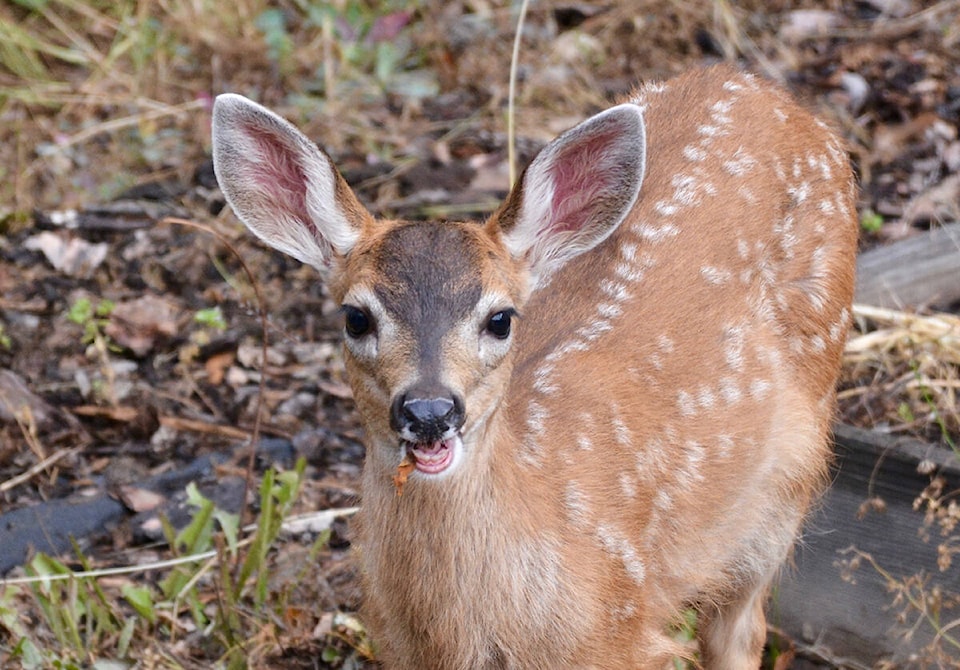While Oak Bay’s immunocontraception program is resulting in fewer fawns being born, spring still brings the season of speckled newborns – and the need to be aware of deer behaviour.
Oak Bay’s Urban Wildlife Stewardship Society shares 5 simple tips to remember during fawning season:
- If you find a fawn, leave it alone – Fawns are born without scent, and for the first few weeks, does may forage and sleep a considerable distance away to reduce the chance of attracting predators, returning to let fawns suckle. Wildlife organizations like WildARC field numerous calls each spring about “orphaned” fawns, but typically advise residents to leave them alone – the mother is likely nearby and will return once you leave.
- Know when to call for help – If the fawn appears cold, weak, thin, injured, is bleating repetitively, or if the mother has not returned to a seemingly healthy fawn for more than eight hours, call WildARC. DO NOT remove the fawn on your own – if you’ve inadvertently handled the animal, rub an old towel on the grass, then gently wipe down the fawn to remove human scent.
- Keep your distance – Does often act in a protective manner if you’re near a fawn, even if you can’t see it. If a doe seems to follow you, try crossing the road or changing direction – you may be unknowingly walking toward a hidden fawn.
- Keep your dogs close – Beyond maintaining distance between you and the deer, it’s also important to keep your dog close – deer perceive dogs as a threat, so keeping them leashed and walking near you will help prevent unwanted interactions.
- Walking, biking or driving, be alert – Whether startled by people, dogs or traffic, deer often appear suddenly. Like many animals, they’re more active at dawn and dusk, at the very time it’s more difficult to see them. Reduce your chance of colliding with a deer by slowing down and scanning ahead, especially in areas they’re known to frequent.
As fawns grow a little older, they’ll begin foraging with their mother, but lack mom’s “street sense.” They can be more likely to dart into your path, not recognizing bikes or vehicles as a threat, or be more tentative. And remember, if you see one deer, chances are more are nearby.
Immunocontraceptive research shared
The University of Victoria team working with UWSS on the immunocontraceptive program will share research at an international conference on Wildlife Fertility Control in Colorado later this month.
Presenting Dr. Jason Fisher’s work, wildlife veterinarian Dr. Adam Hering will highlight habitat use research and the fawning rate reduction released as two interim reports in 2021.
Research indicates that deer aren’t spread evenly throughout Oak Bay, but tend to be found in areas with lots of green space and large lots with an abundance of vegetation to browse on. Additionally, the immunocontraception application was showing a reduction in fawning rates by nearly 60 per cent after the first year, notes UVic PhD candidate Alina Fisher.
Dr. Hering has also completed collar checks on a number of Oak Bay does and found no issues.
“The collars look to be fitting nicely and it could be the loft of their coats is often to blame for the concerns around tight-fitting collars,” he said.
Learn more at uwss.ca
